Gold prices hold sharp gains as soft US jobs data fuels Fed rate cut bets
Introduction & Market Context
Deutsche Post AG (ETR:DHLn) (XETRA:DHL) reported a 5% year-over-year increase in Group EBIT to €1,370 million for the first quarter of 2025, according to the company’s presentation delivered on April 30 in Bonn. The logistics giant achieved this growth despite what it described as "difficult markets" and increased volatility stemming from recent changes in US trade policy.
The company is navigating a complex global trade environment characterized by significant tariff changes, including the implementation of 10% baseline US tariffs since April 5, and potential 145% effective tariffs on Chinese imports. These developments have created both challenges and opportunities for the logistics provider.
As shown in the following slide detailing the current trade policy landscape:
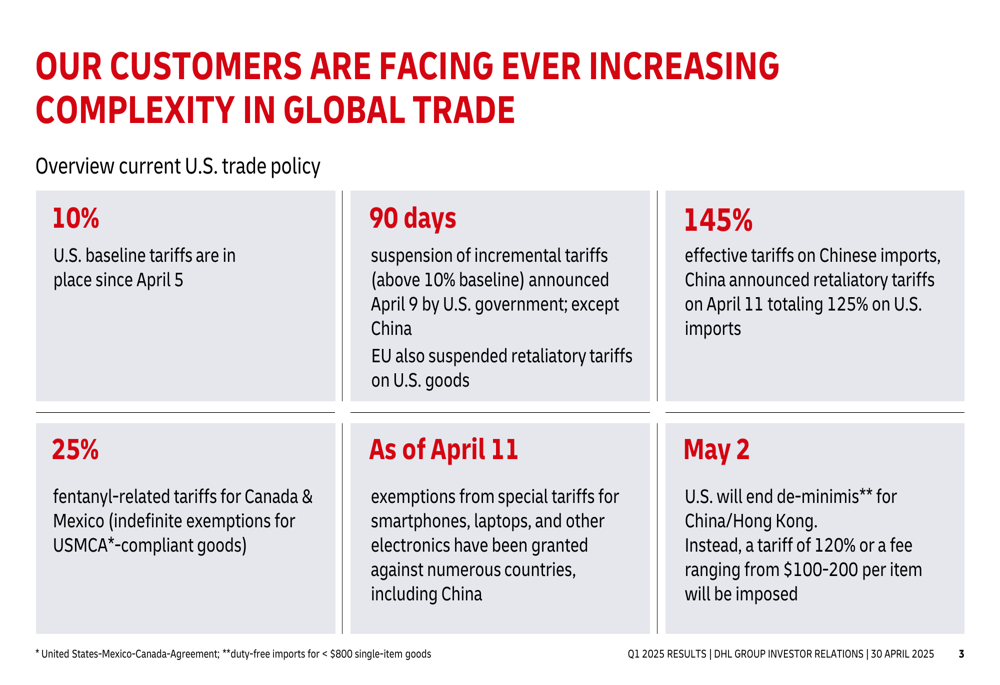
In response to these trade policy shifts, DHL has identified six emerging supply chain strategies being adopted by customers across various industries:
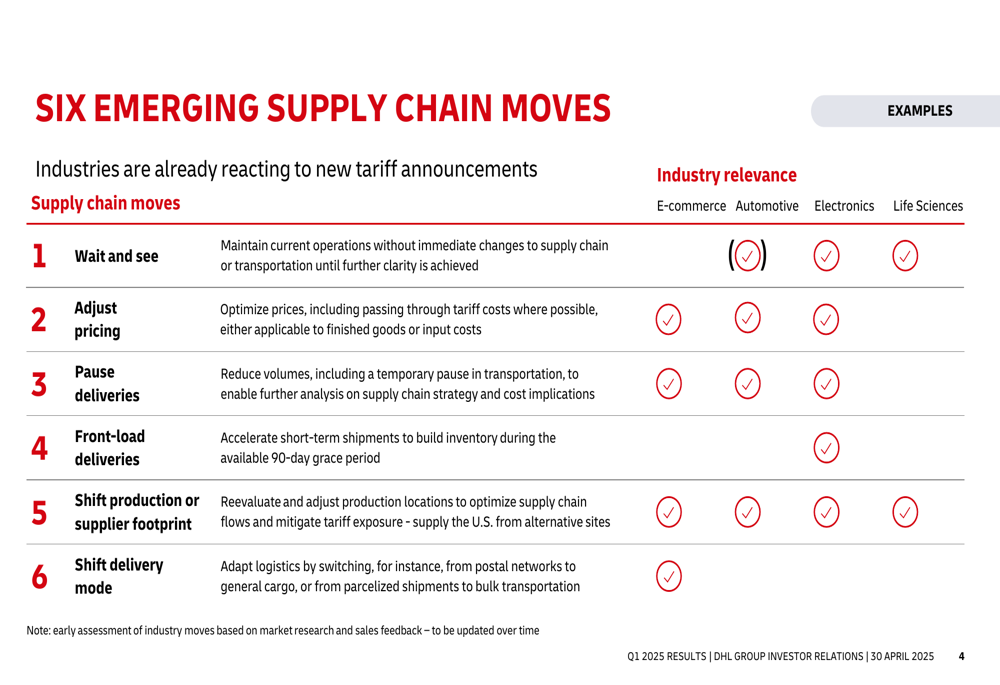
Quarterly Performance Highlights
Deutsche Post (OTC:DHLGY) reported solid financial results for Q1 2025, with revenue increasing by 3% year-over-year to €20,809 million. Net profit rose 6% to €786 million, while basic earnings per share improved 8% to €0.68. The company generated strong operating cash flow of €2,178 million, up 9% compared to the same period last year.
Free cash flow excluding net M&A reached €732 million, representing a 17% year-over-year increase, demonstrating the company’s improved cash generation capabilities despite market volatility.
The comprehensive financial performance is illustrated in the following slide:
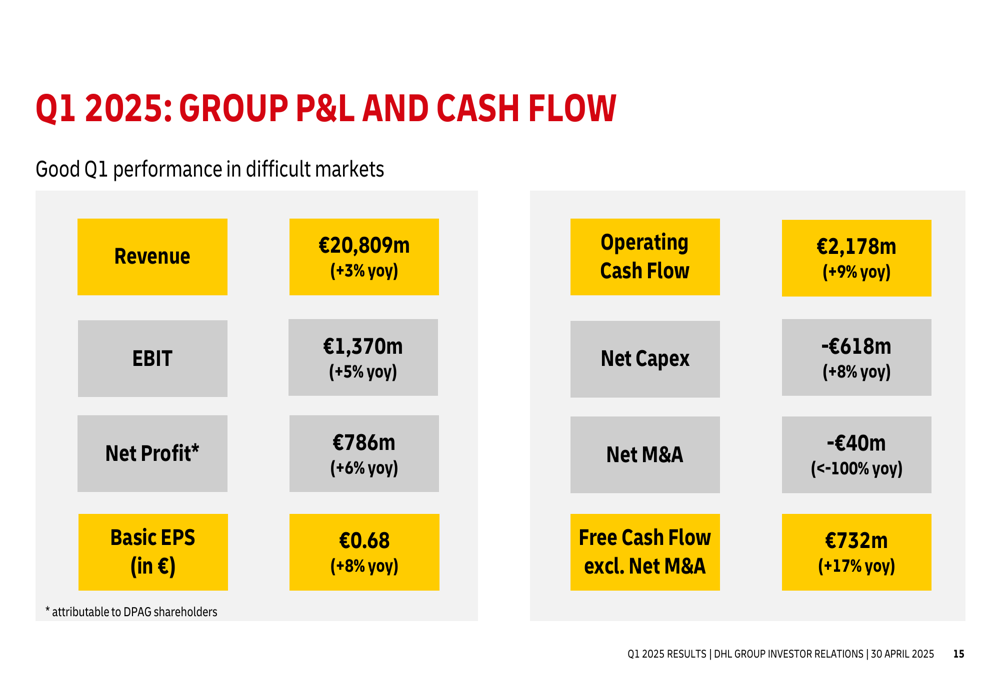
The company’s overall performance was driven by strong results in several key divisions, with the Group EBIT increasing 5% year-over-year:
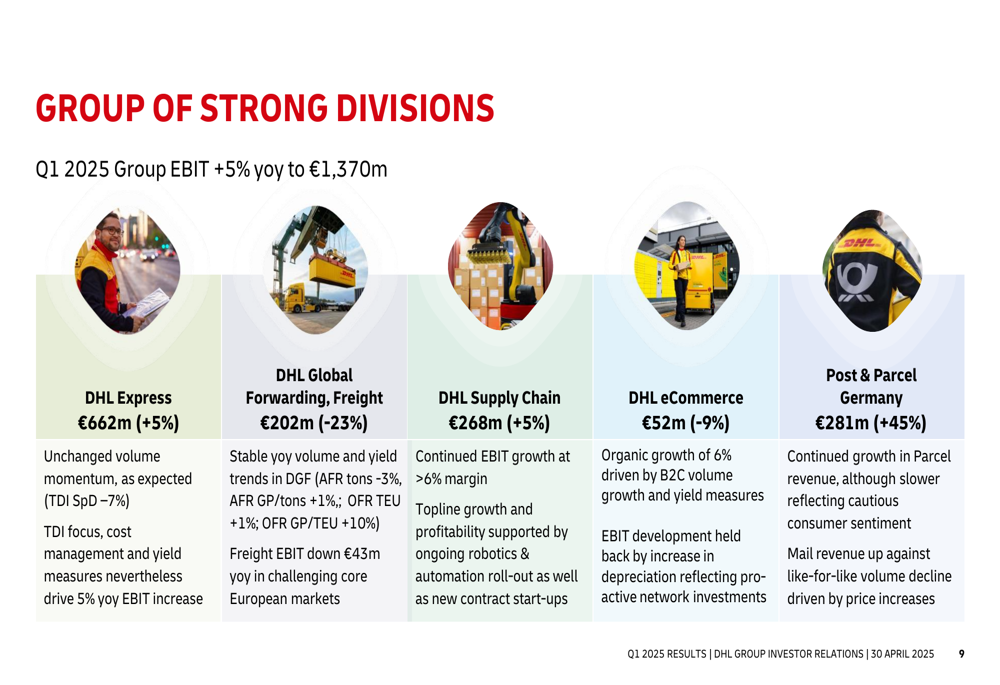
Division Performance Analysis
Performance across DHL’s divisions varied significantly in the first quarter. The Post & Parcel Germany division was the standout performer, with EBIT surging 45% year-over-year to €281 million. This growth was primarily driven by an 11% increase in parcel volumes, which more than offset the 5% decline in mail volumes.
As shown in the P&P Germany performance slide:
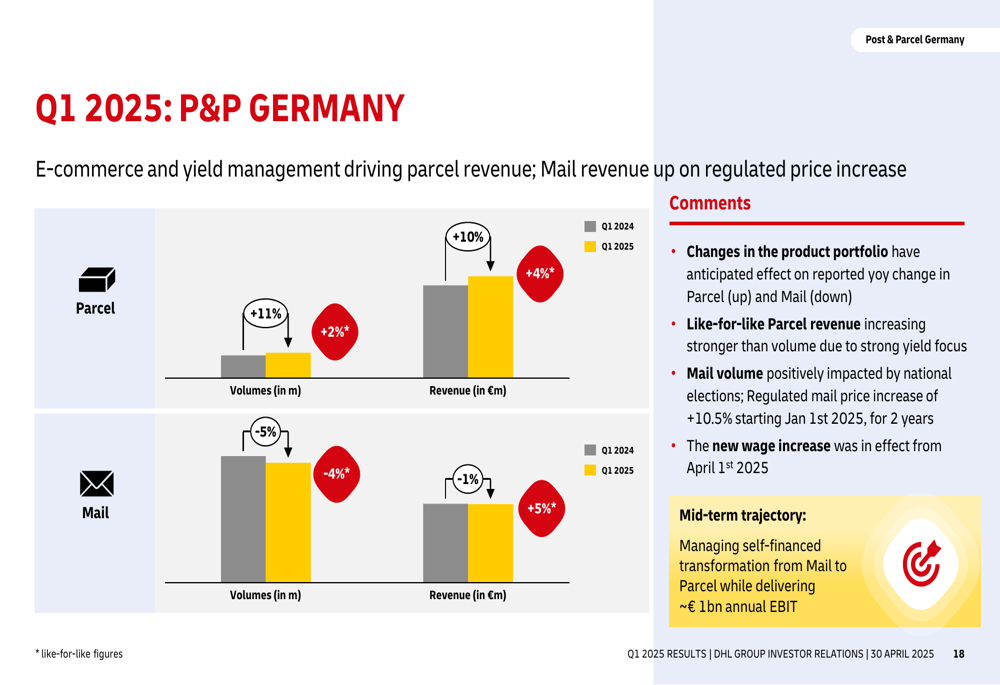
DHL Express, the group’s largest division by EBIT contribution, delivered a 5% increase in earnings to €662 million. This growth was achieved despite unchanged volume dynamics, primarily through cost optimization initiatives. The division reduced air capacity by 5% year-over-year in Q1, including a 4% reduction in block hours, while improving weight load factor by 120 basis points.
The Express division’s performance is detailed in the following slide:

DHL Supply Chain also performed well, with EBIT growing 5% to €268 million and maintaining a 6% EBIT margin. The division signed new contracts worth €735 million in Q1 and completed the consolidation of Inmar, a US reverse logistics provider, acquired effective January 1, 2025.
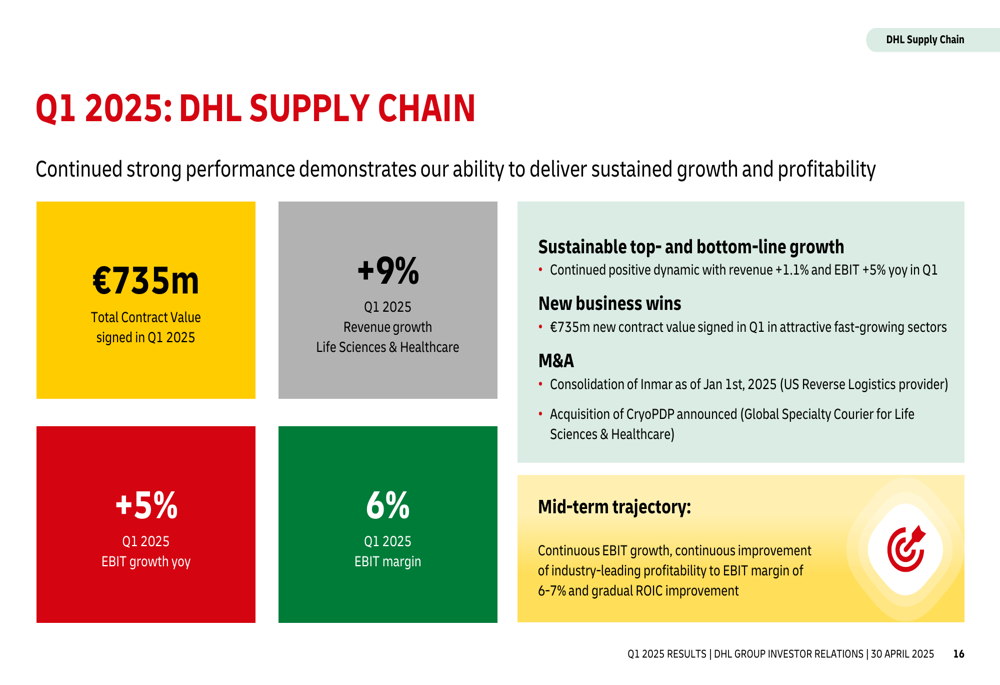
However, not all divisions showed positive momentum. DHL Global Forwarding, Freight experienced a 23% decline in EBIT to €202 million, reflecting challenging conditions in core European markets. The division maintained stable volumes year-over-year but faced increased volatility due to the changing tariff environment.
DHL eCommerce also faced headwinds, with EBIT declining 9% to €52 million despite organic growth of 6% driven by B2C volume growth and yield measures. The division’s increased depreciation costs (+24% year-over-year) currently offset EBITDA growth of 13%.
Strategic Initiatives
Deutsche Post is executing its "Fit for Growth" program to optimize costs while simultaneously investing in high-growth markets and sectors. The initiative has already yielded results, particularly in the Express division, where aviation net supply costs declined by 7% year-over-year, hub costs decreased by 1%, and pick-up and delivery costs were reduced by 1%.
The implementation of these cost optimization measures is illustrated in the following slide:
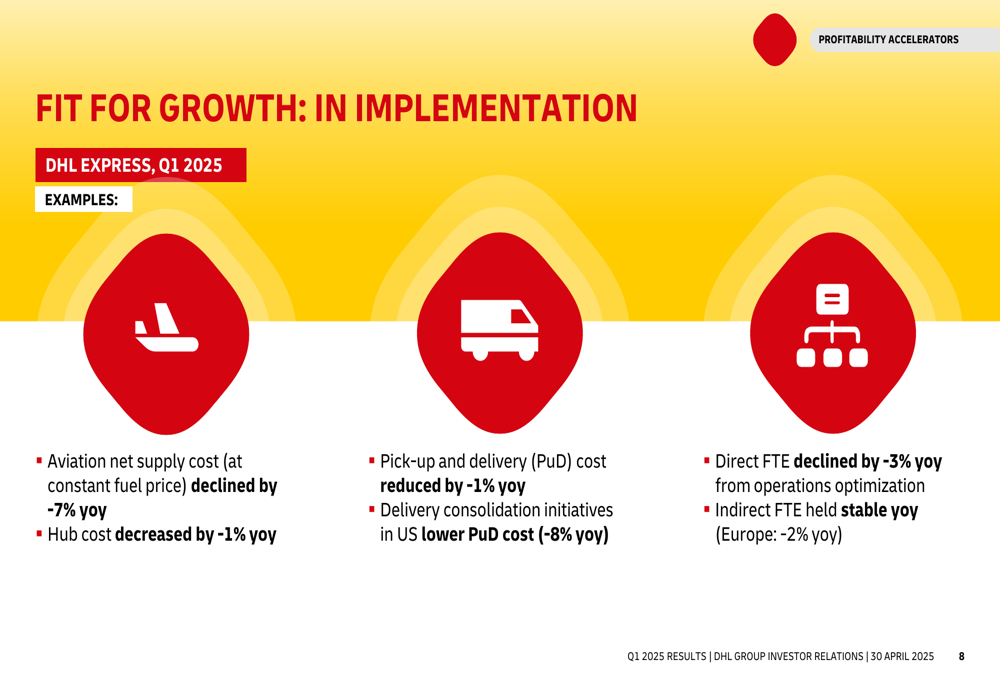
Simultaneously, the company continues to invest in growth opportunities, committing €2 billion organically by 2030 to boost globally integrated healthcare solutions. This includes the acquisition of CRYOPDP, a leading specialty courier for clinical trials, biopharma, and cell & gene therapies.
DHL is also focusing on countries with above-global GDP growth potential (referred to as GT20), achieving double-digit revenue growth year-over-year in 7 of these 20 countries during Q1 2025.
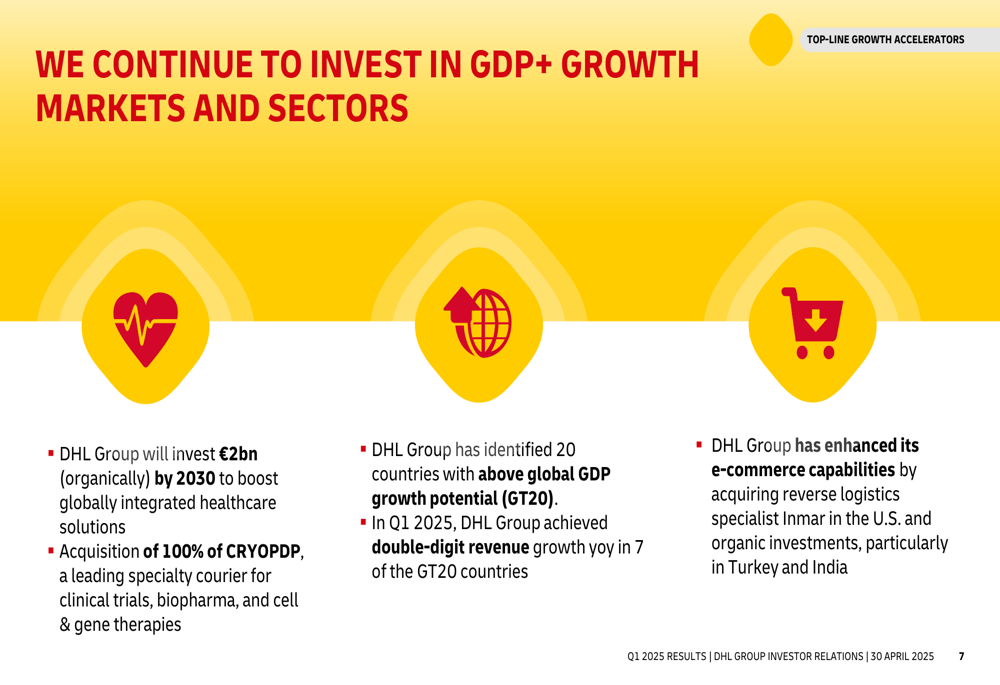
To help customers navigate the complex trade environment, DHL has developed tailored logistics solutions, including duty drawback services, break bulk express shipping, free-trade zone operations, and bonded warehousing:
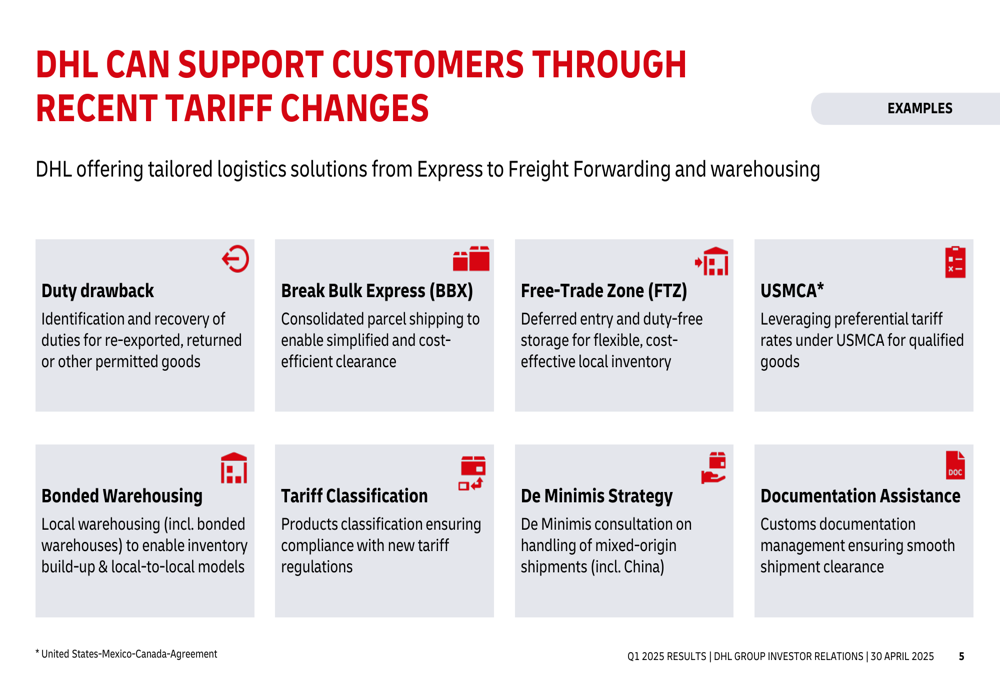
Forward-Looking Statements
Deutsche Post maintained its financial guidance for fiscal year 2025, targeting Group EBIT of at least €6.0 billion and free cash flow excluding net M&A of approximately €3.0 billion. The company’s mid-term ambition remains to achieve Group EBIT exceeding €7 billion.

The company’s strategy focuses on executing what it can control amid increased volatility in tariffs and macroeconomic conditions. This includes disciplined cost and capital expenditure management, accelerating top-line growth in strategic segments, and enhancing profitability across the business.
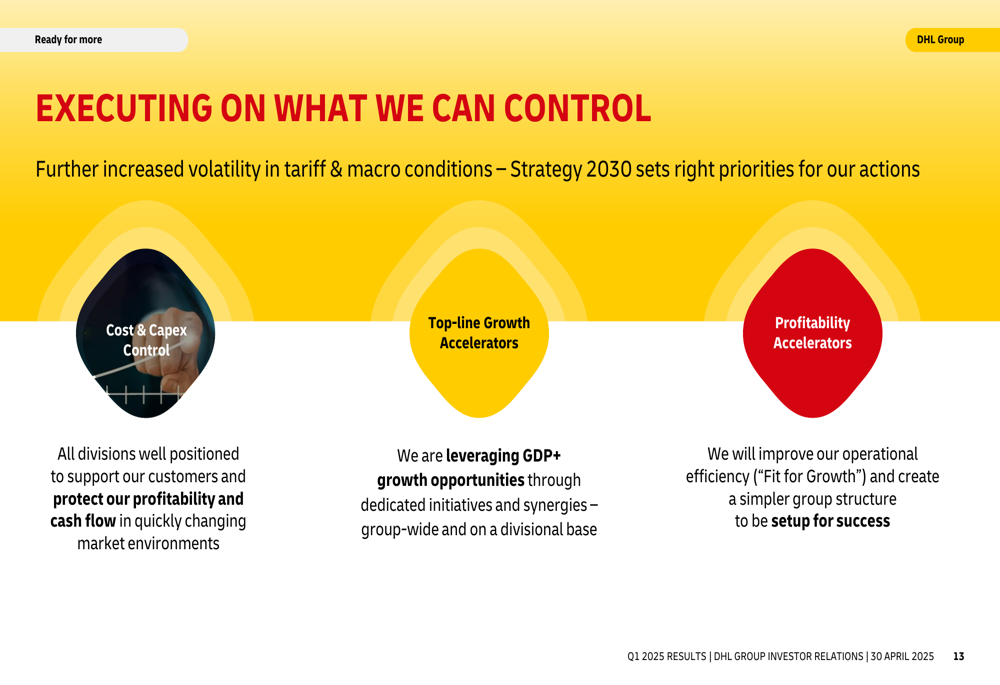
Deutsche Post stock closed at €37.09 on April 29, 2025, down 0.3% for the day. The shares have traded between €32.07 and €43.93 over the past 52 weeks, according to available market data.
The company’s ability to deliver growth despite challenging market conditions demonstrates its resilience and the effectiveness of its strategic initiatives. However, the divergent performance across divisions highlights the varying impacts of global trade complexities on different segments of the logistics business.
Full presentation:
This article was generated with the support of AI and reviewed by an editor. For more information see our T&C.
